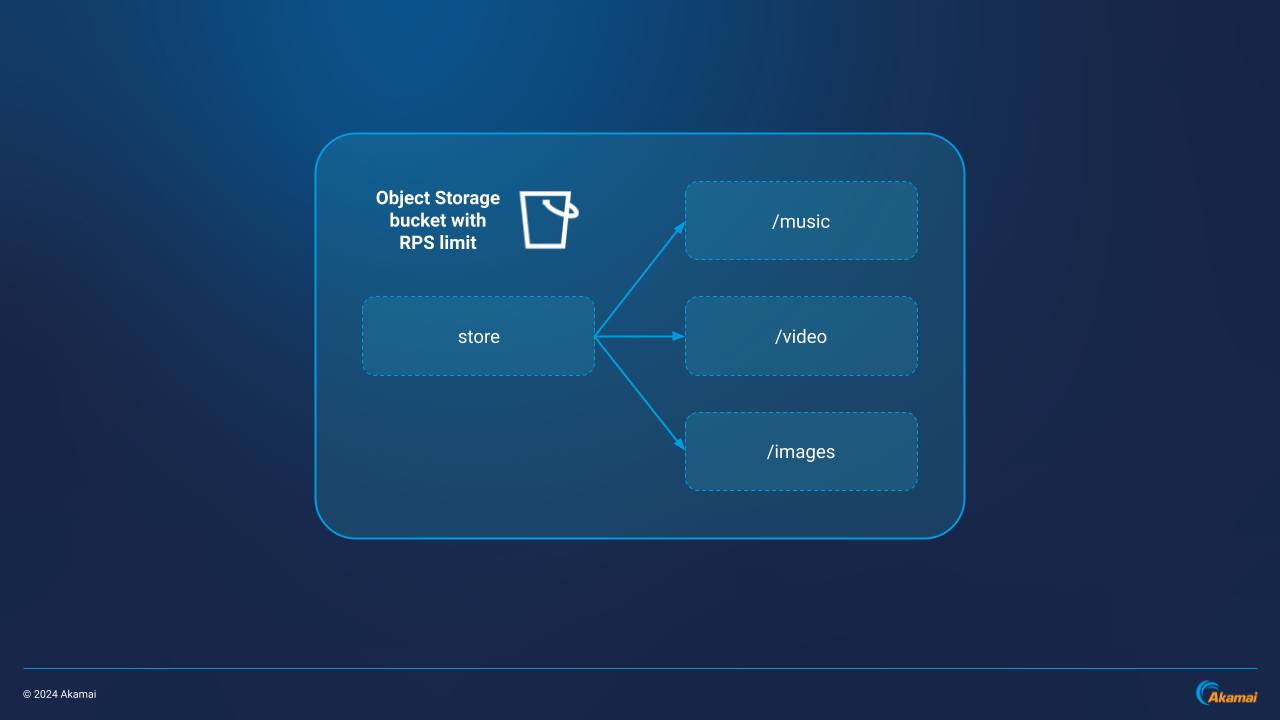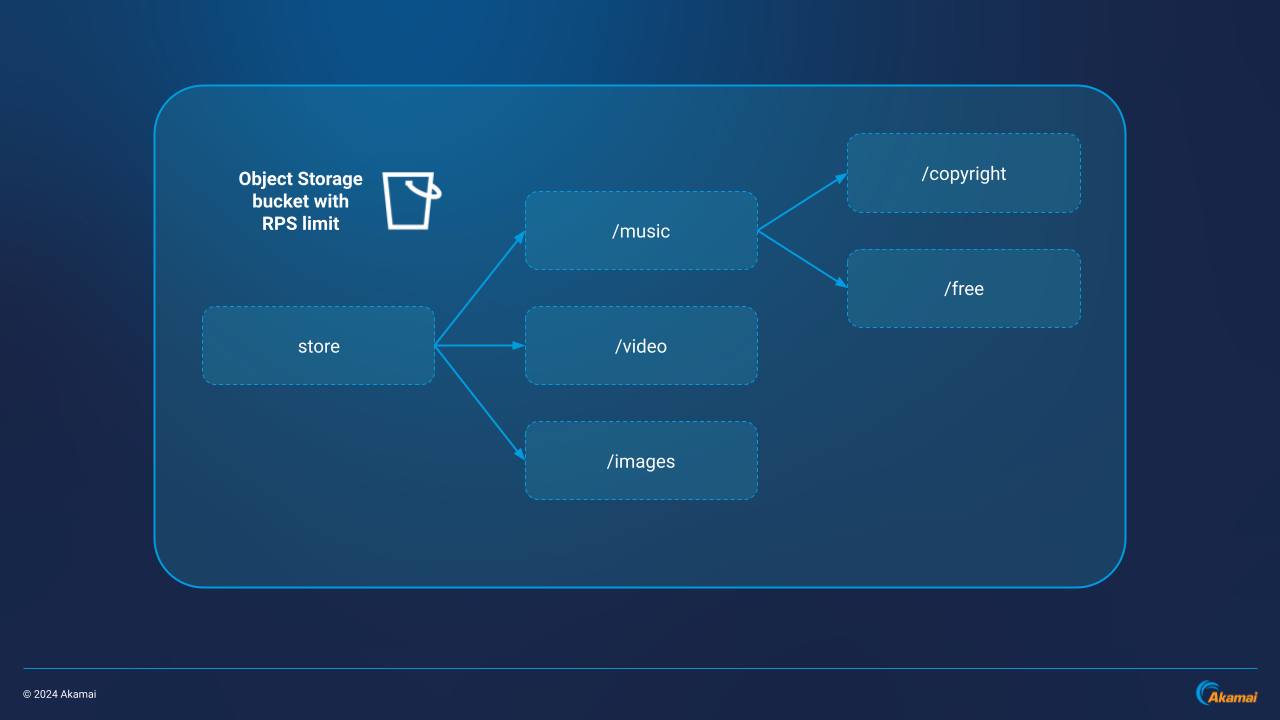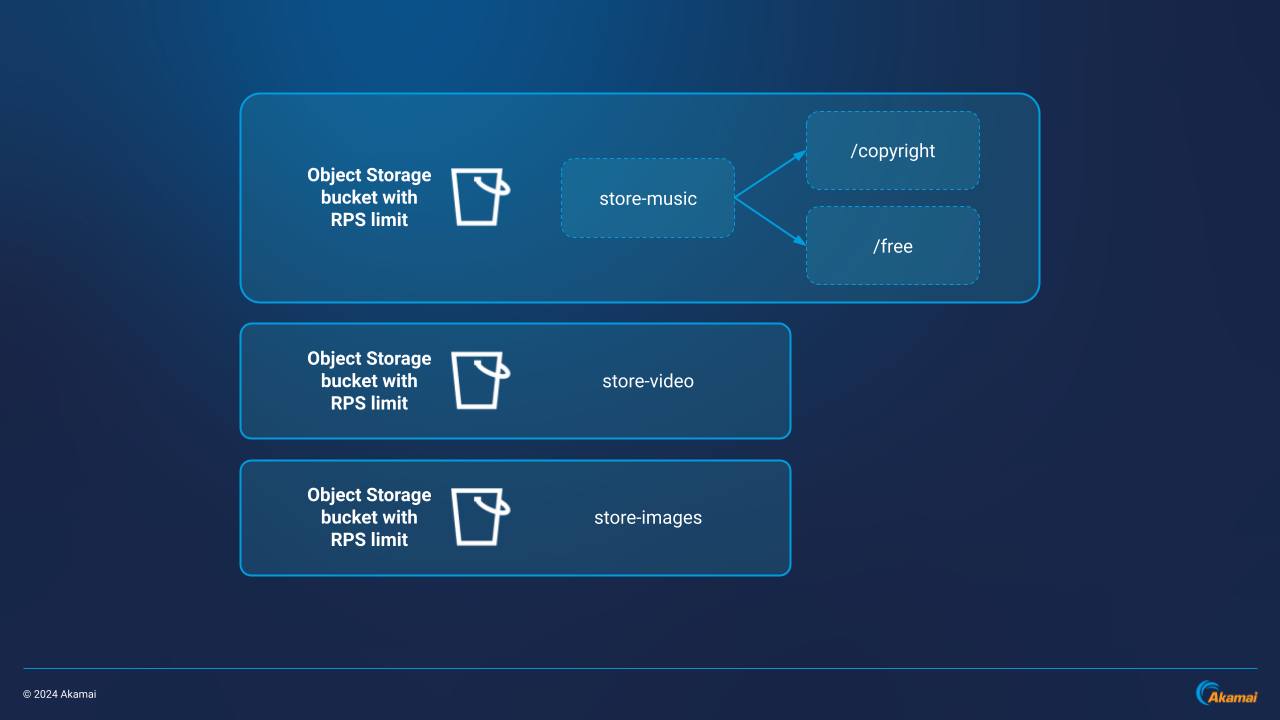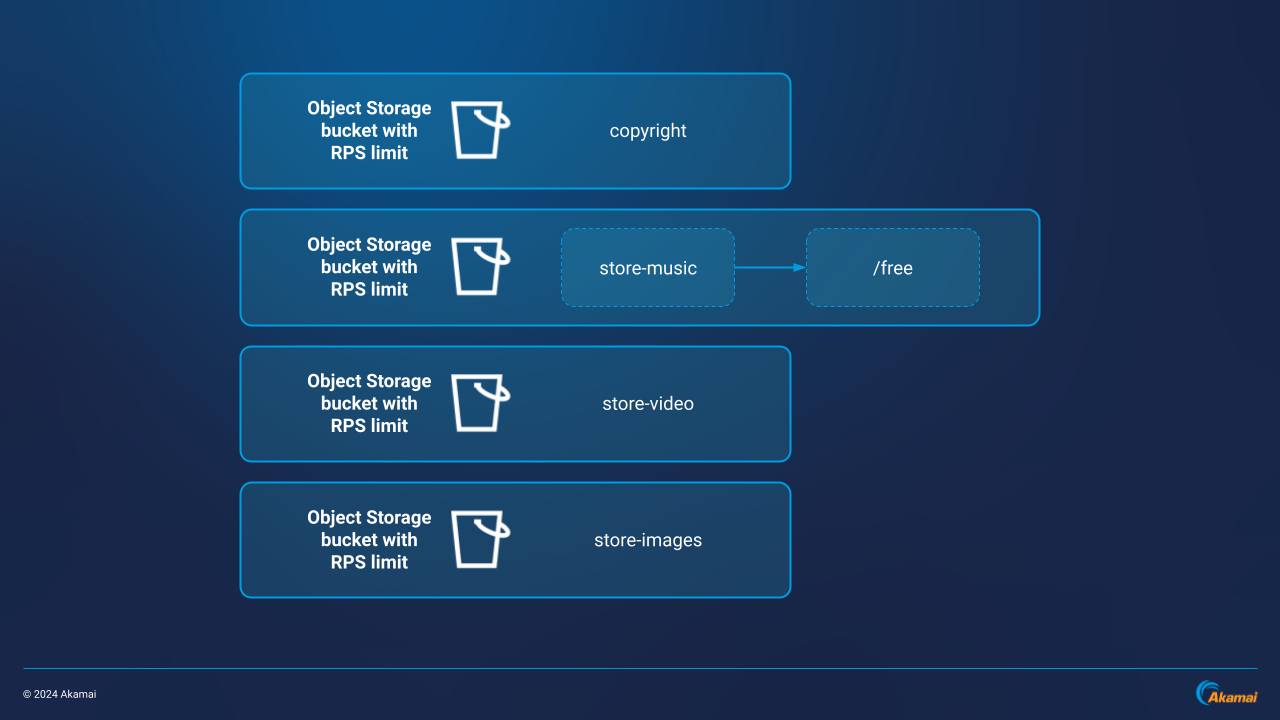Product docs and API reference are now on Akamai TechDocs.
Search product docs.
Search for “” in product docs.
Search API reference.
Search for “” in API reference.
Search Results
results matching
results
No Results
Filters
Optimizing Object Storage Bucket Architecture for Akamai CDN
Traducciones al EspañolEstamos traduciendo nuestros guías y tutoriales al Español. Es posible que usted esté viendo una traducción generada automáticamente. Estamos trabajando con traductores profesionales para verificar las traducciones de nuestro sitio web. Este proyecto es un trabajo en curso.
Linode Object Storage can be an efficient, cost-effective solution for streaming and data delivery applications when used as an origin point for Akamai CDN. Since Object Storage is a part of Akamai Cloud and uses the same backbone as Akamai CDN, egress can also be significantly reduced.
Your Object Storage bucket architecture is critical to performance success. In particular, distributing content across multiple buckets helps with load distribution, CDN optimization, and adds security benefits like segmentation and origin obfuscation. This guide walks through bucket design strategies using a commerce site example, including an optimal bucket architecture for Akamai CDN integration.
How Object Storage Works
Object Storage stores files in a “flat” or unstructured file structure. This means that bucket contents do not exist in a hierarchy like traditional file structures; however, hierarchy can be emulated by creating folders within a bucket. Files (or “objects”) are stored alongside their rich metadata, and access can be granted on a per-object level, with each object assigned a unique URL.
Bucket Architecture Strategies
Example Scenario
For the example bucket architecture, consider the following scenario:
- An online commerce site serving audio, video, and image-based content
- All audio, video, and image files are stored on object storage as an origin point
What “Not” To Do
In the first bucket example, the top-level directory store has paths to three lower-level directories containing different types of content: music, video, and images. store and its sub-directories are in a single bucket. This bucket has a defined requests per second (RPS) limit, where the RPS limit is shared by all objects in the bucket.
Paths in this bucket are: store/music, store/video, and store/images.

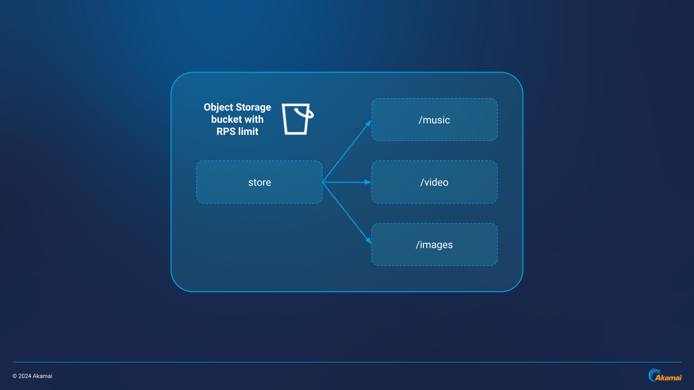
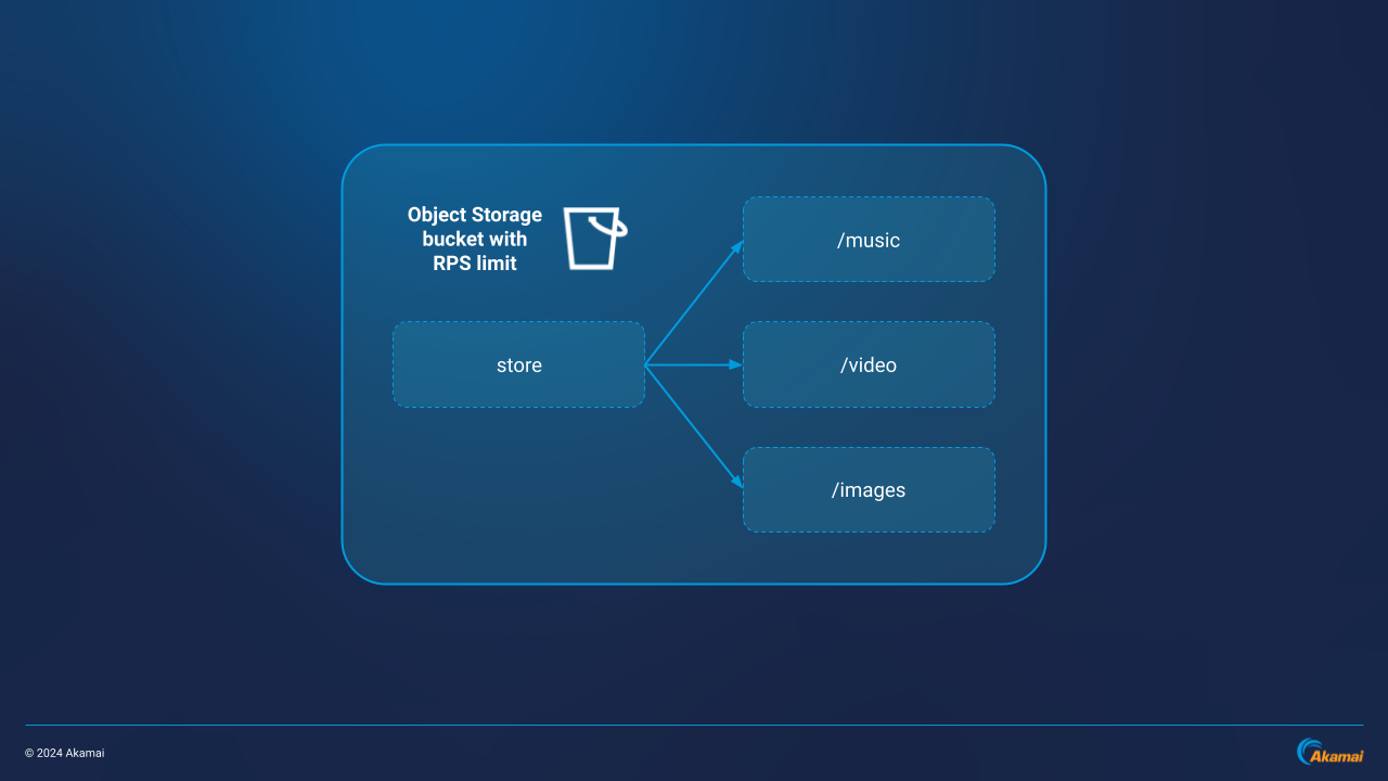
Additional content such as copyrighted music or free music is placed as sub-directories under the store/music directory. Paths in this bucket now include: store/music, store/music/copyright, store/music/free, store/video, and store/images.

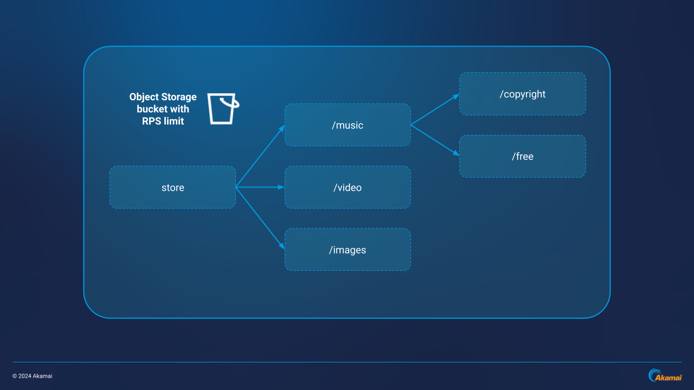
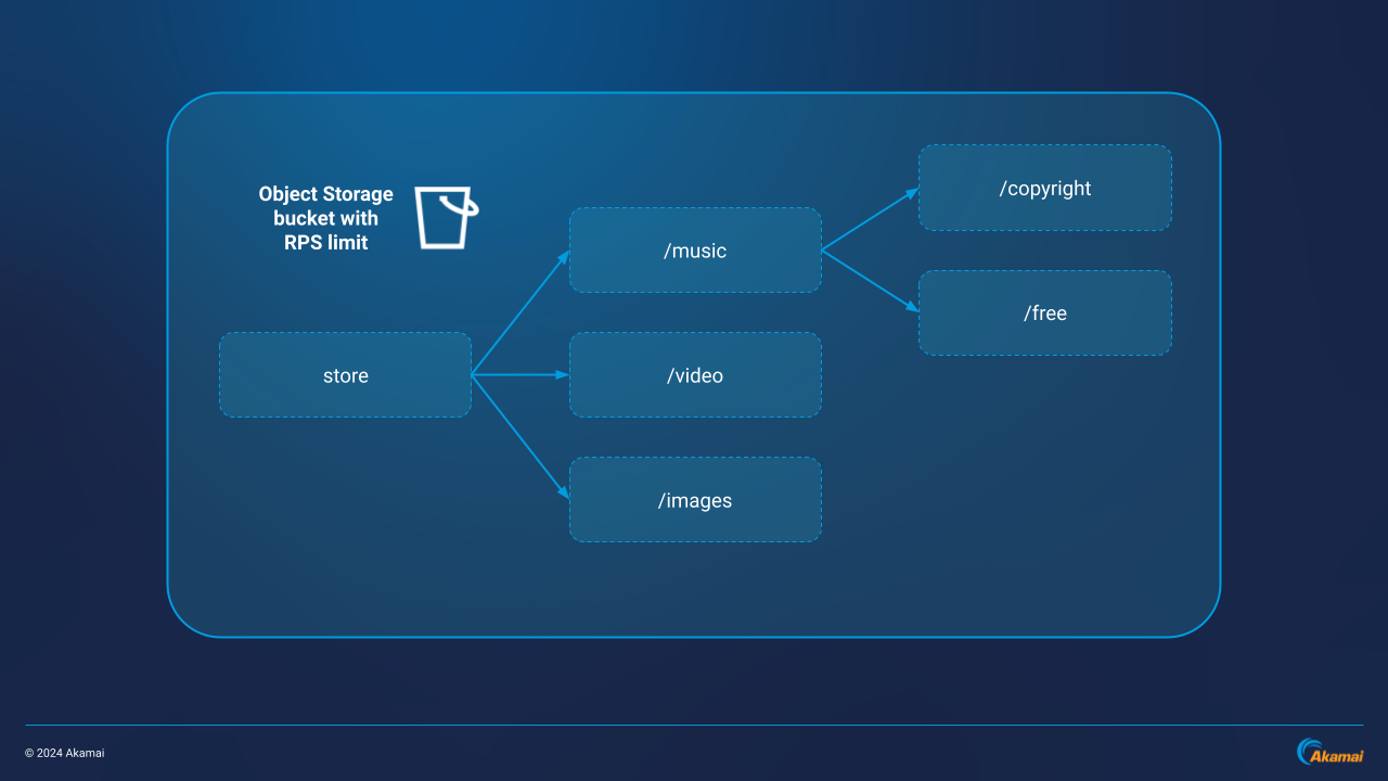
This architecture places content paths and object endpoints all within the same bucket, store. This may potentially result in poor performance with rate limits for the bucket being reached as the number of users and requests increases.
What To Do & How To Leverage CDN Advantages
CDN Offloading
One way to overcome these issues is by utilizing Akamai CDN and its ability to cache and deliver content closer to end users. Once the CDN caches an object like a song, video, or image, it doesn’t need to be pulled from origin storage again until the object file changes or the cache timeout expires. For example, by offloading requests to the CDN, a single MP3 audio file downloaded 1 million times only requires a single request to the source bucket.
Distributed Bucket Architecture
While Akamai CDN can help get around some limitations of a single-bucket architecture, you can improve and optimize your object storage performance even further by distributing content across multiple buckets. Doing this results in:
- Overall load distribution
- Increased requests-per-second (RPS) capacity
- Segmentation of content across endpoints can act as a security measure in case of compromise
- Distribution of the number of single endpoint requests from the CDN
Rather than placing music, video, and image content folders within the same top-level directory, you can triple RPS capacity by placing each type of content (music, video, and images) in their own buckets: store-music, store-video, and store-images. In the example below, additional content is placed underneath the top-level directory of each bucket:
- Paths for the
store-musicbucket include:store-music,store-music/copyright, andstore-music/free - Paths for the
store-videobucket include:store-video - Paths for the
store-imagesbucket include:store-images

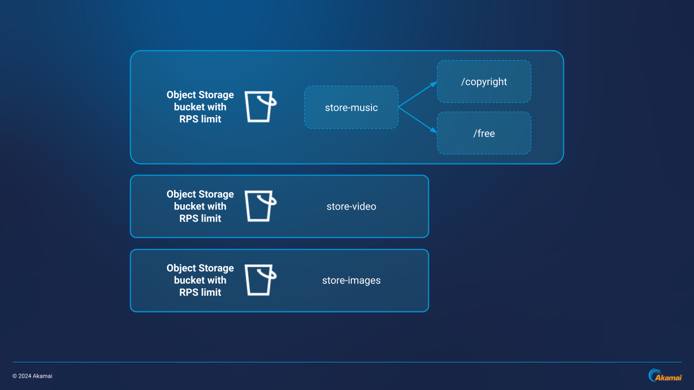
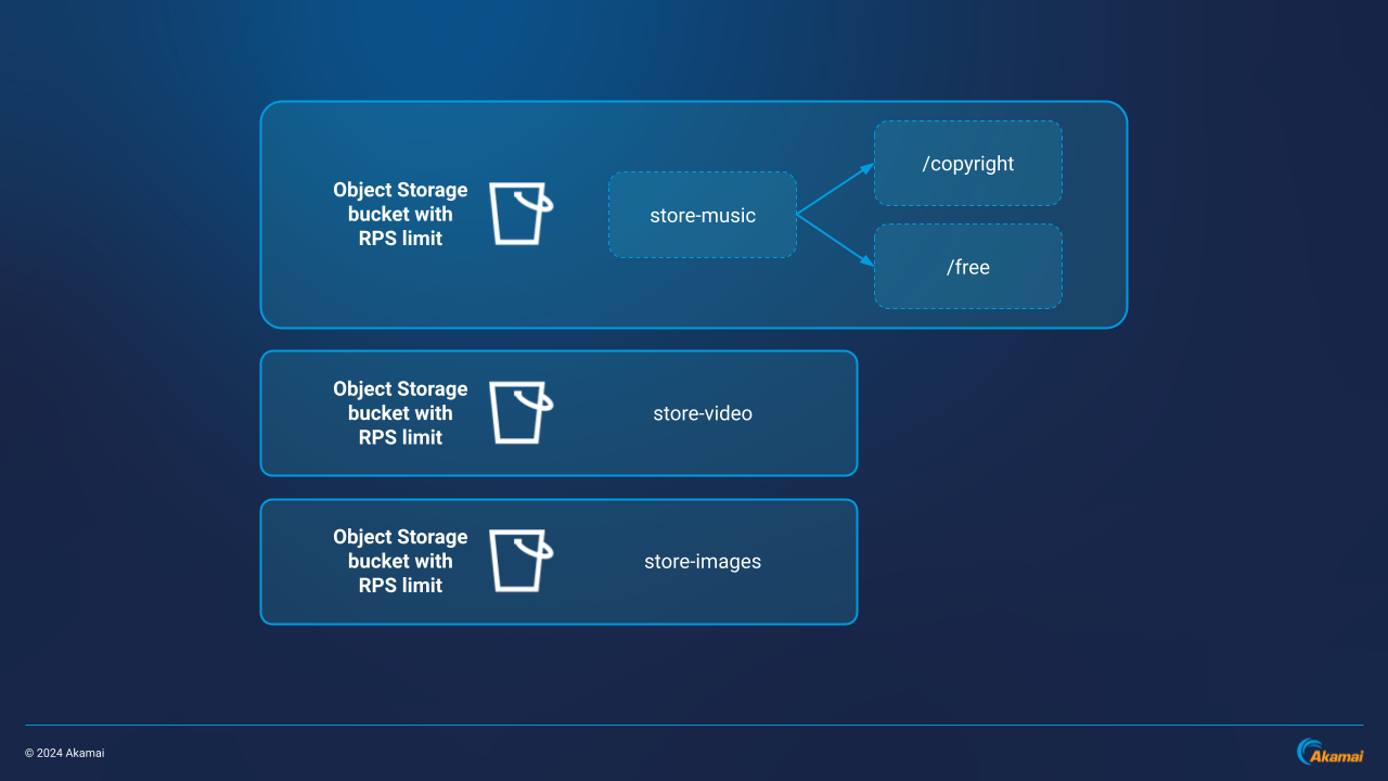
As the site scales, you can create additional buckets and move sub-category content (such as copyrighted or free music) to their own buckets. This increases RPS capacity by further distributing the number of endpoints from which the CDN can cache content. In the example below, copyrighted music is stored in a new copyright bucket. RPS capacity is now four times the original bucket architecture:
- Paths for the
copyrightbucket include:copyright - Paths for the
store-musicbucket now include:store-musicandstore-music/free - Paths for the
store-videobucket include:store-video - Paths for the
store-imagesbucket include:store-images

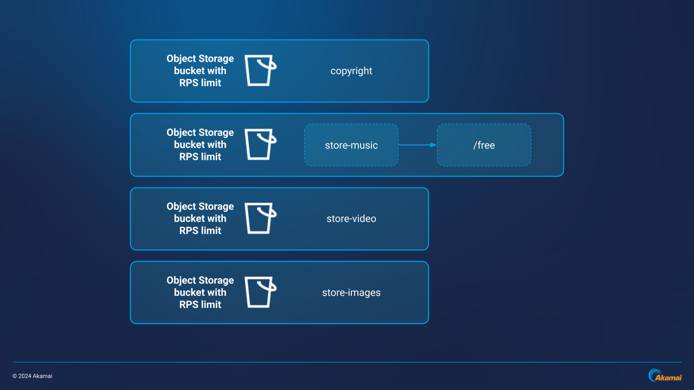
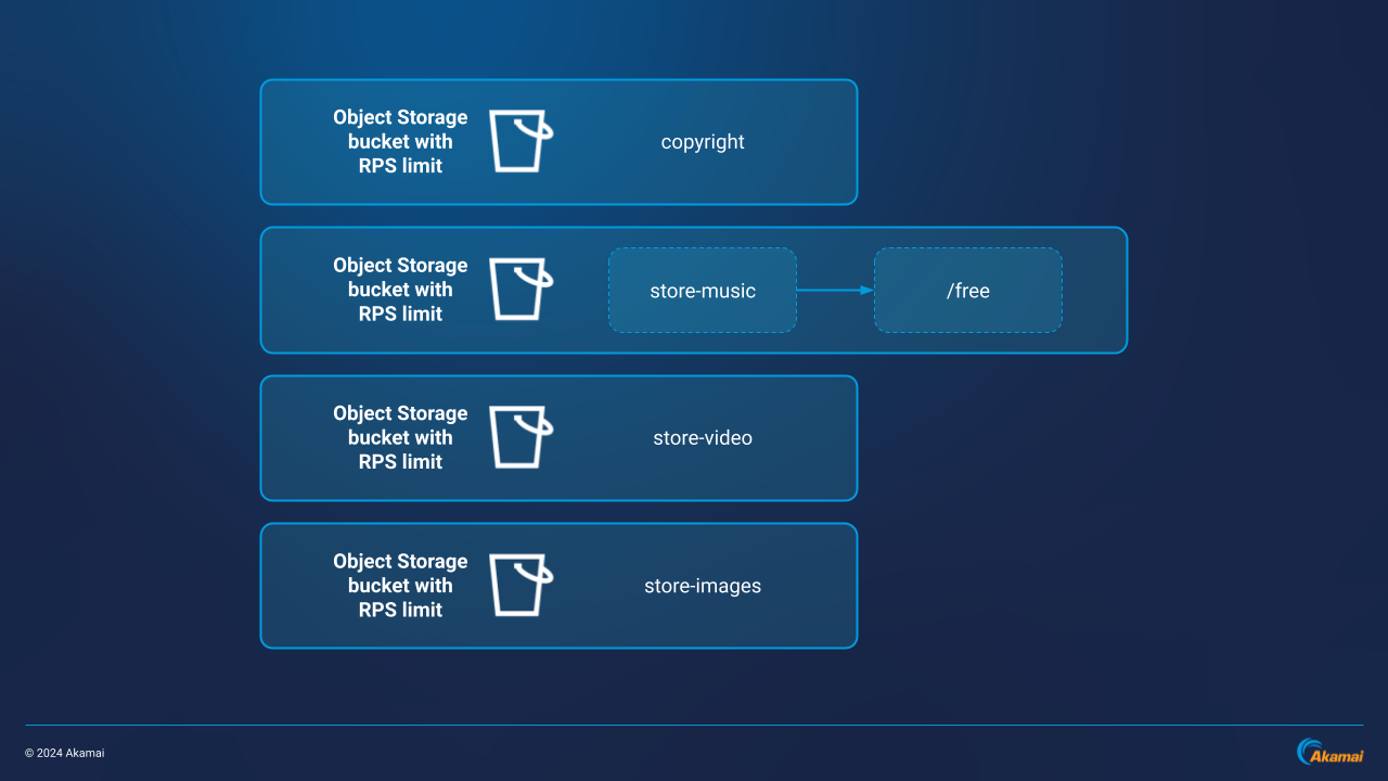
CDN & the Relationship To Bucket Design
CDN Considerations
Each bucket in your architecture has the ability to serve as a single origin endpoint from which Akamai CDN can pull content. This results in a distributed backend with less opportunities for RPS limits to be reached. The more distributed your backend architecture is, the higher the capacity for scaling.
Relationship To Bucket Design
CDNs can often overcome flaws of poorly architected environments. However, when a bucket architecture is designed well, the benefits can directly translate to the CDN. Object Storage bucket architecture should be designed to be functional, scalable, performant, resilient, and cost efficient so that Akamai CDN serves your content as effectively as possible.
More Information
You may wish to consult the following resources for additional information on this topic. While these are provided in the hope that they will be useful, please note that we cannot vouch for the accuracy or timeliness of externally hosted materials.
This page was originally published on
